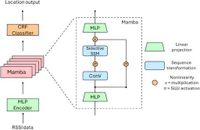Advancements in machine learning technology are paving the way for enhanced indoor localization systems that can operate efficiently on low-power devices, marking a significant leap forward in the healthcare sector. New research focuses on developing small and efficient models, termed TinyML, to enable on-device localization without relying heavily on external resources. This move is vital for applications such as health monitoring, where accurate tracking of individuals can greatly improve patient outcomes.
The growing reliance on data-driven insights in healthcare underscores the urgent need for precision in indoor localization—especially for monitoring vulnerable populations such as the elderly or those with cognitive impairments. Effective indoor localization can prevent incidents like wandering and ensure timely medical assistance, ultimately improving patient safety and care quality.
Traditionally, indoor localization systems have depended on large machine learning models that require central processing in remote servers, leading to increased latency and potential privacy concerns. Adopting TinyML changes this paradigm, as it allows for the processing of data directly on low-power microcontroller units (MCUs). Not only does this reduce latency, but it also enhances privacy by keeping sensitive location information local and lowering operational costs.
The research emphasizes model compression techniques, which are crucial for fitting sophisticated localization algorithms into tight memory constraints typical of MCUs. This study employs two primary techniques: quantization and knowledge distillation. Quantization effectively reduces the model's size by lowering the precision of the model's numerical weights while maintaining its performance. Knowledge distillation, on the other hand, involves training a smaller model (the student) to mimic the output of a larger model (the teacher), thereby enabling efficient functionality even with limited resources.
Building on existing models, the research compares the effectiveness of a state-of-the-art transformer model and a newly proposed Mamba architecture designed to handle sequence modeling efficiently. As stated in the research, "Our results show that the quantized transformer model performs well within a 64 KB RAM constraint, achieving an effective balance between model size and localization precision." The ability of these models to fit within such constraints opens new avenues for real-world applications in healthcare where accurate location data is crucial.
The study tested these models under various memory constraints using datasets collected from real-world indoor environments, including residential homes and academic settings. Each dataset provided unique challenges in localization accuracy, illustrating the importance of creating models adaptable to different environments. While the transformer-based model, referred to as MDCSA, excelled in certain conditions, the Mamba model showcased its strengths in more resource-limited environments.
One key insight from the study is that the Mamba architecture, tailored for compactness, performs exceptionally in scenarios with more stringent memory limitations, proving its viability for deployment in devices with less than 32 KB of RAM. This model has the potential to enhance healthcare monitoring capabilities, as the application of these TinyML models in healthcare can revolutionize patient tracking practices. The authors note, "The application of these TinyML models in healthcare has the potential to revolutionize patient monitoring by providing accurate, real-time location data while minimizing power consumption, increasing data privacy, improving latency and reducing infrastructure costs."
Furthermore, the research highlights that all tested models achieved higher accuracy than F1 scores across the datasets, addressing the challenges posed by class imbalance. While the models showed overall high accuracy in identifying frequently visited rooms, areas such as stairs or other less frequently accessed spaces presented more significant challenges, crucial for healthcare settings.
In conclusion, this research marks a critical step toward employing TinyML in healthcare scenarios, offering efficient, privacy-preserving, and affordable solutions to meet indoor localization needs. By integrating advanced ML models capable of on-device processing, healthcare technology can enhance its patient monitoring systems to deliver timely interventions. The findings solidly back the potential of the outlined frameworks to facilitate robust healthcare applications by leveraging innovative machine learning techniques.

